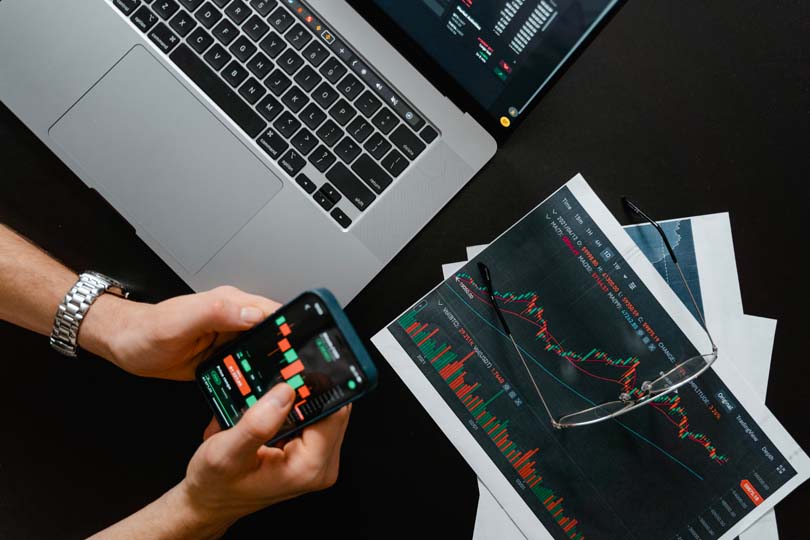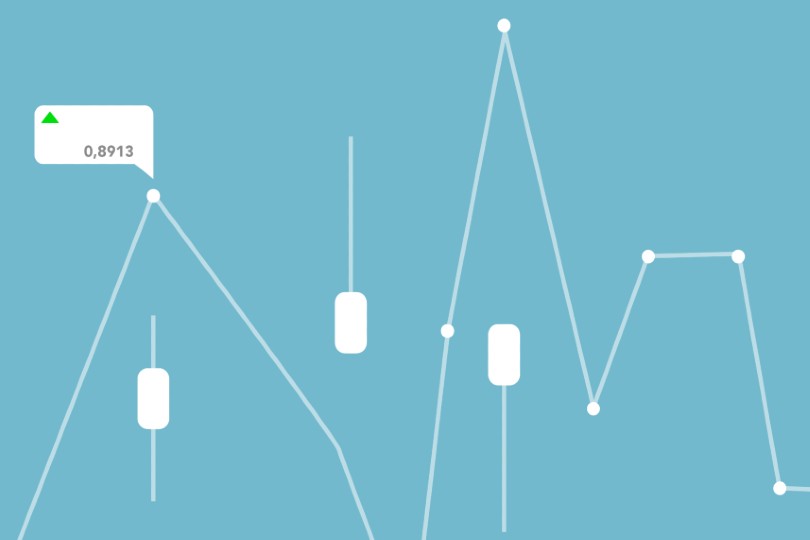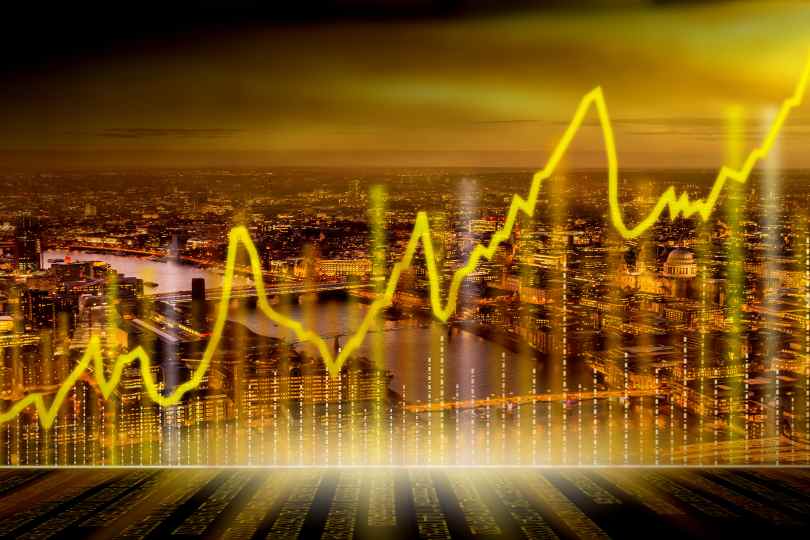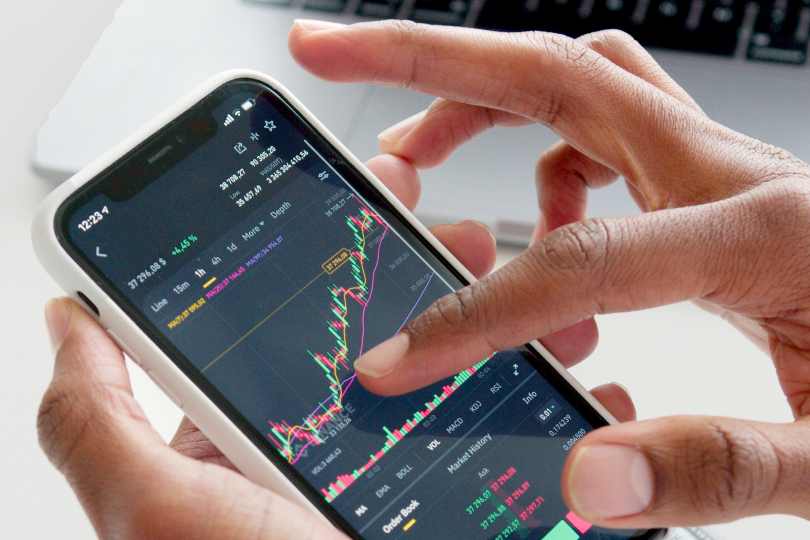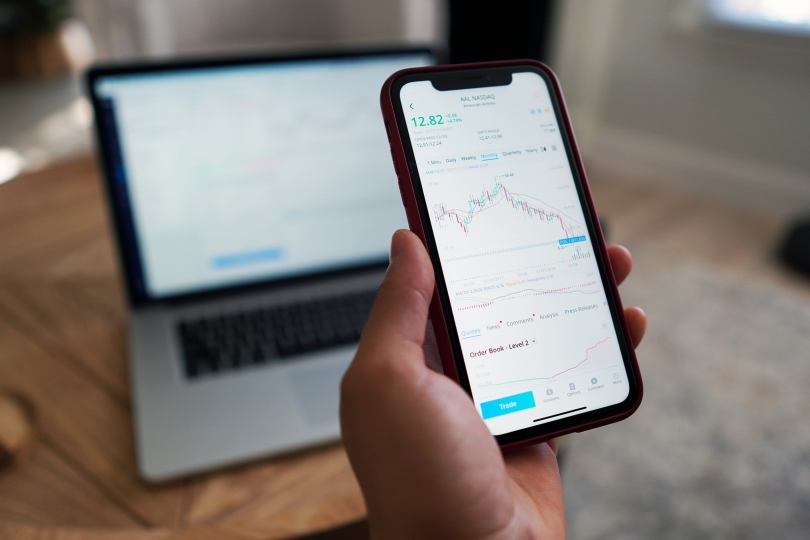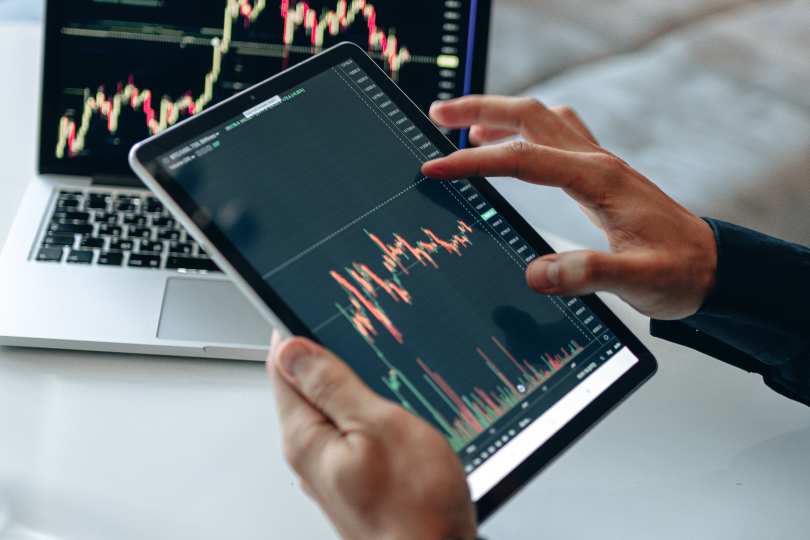What is an Exchange-Traded Fund (ETF)?
An exchange-traded fund (ETF) is a combined ‘basket’ of securities. Within the basket, you might find stocks, bonds, commodities or a mix of the above. Because ETFs are traded on the exchanges, each ETF basket has a unique ticker.
At its core, ETFs are a vehicle for buying and selling assets in a single transaction rather than making multiple purchases or sales and paying the individual fees.
My key takeaways
- ETFs are a type of investment fund and exchange-traded product that are bought and sold on stock exchanges.
- ETFs are similar to mutual funds but differ in that they are traded throughout the day and have an arbitrage mechanism designed to keep them trading close to their net asset value.
- Most ETFs are index funds and hold the same securities in the same proportions as a certain stock market index or bond market index.
- ETFs can be attractive investments due to their low costs, tax efficiency, and tradability.
ETFs have a fund provider or owner, who owns the assets, designs the fund, and sells shares in the fund. Investors can buy a share of the fund in the same way they might buy shares of a company (i.e., through a broker). Like stocks, the ETF is traded throughout the day and has different prices.
Unlike stocks, however, when you invest in an ETF, you own a portion of that ETF, but you don’t own the underlying assets.
Trusted partner

Capital at risk. T&Cs apply.
Most economical ETFs
- User friendly app
- Excellent customer service
- 0.25% for managed portfolios
How Do ETFs Work?
An ETF is traded on the stock exchange just as a stock is. However, their addition to the market is not through an initial public offering. Instead, they use a creation/redemption process that creates a continuous process for ETF shares.
Let’s walk through it:
You want to put money into an ETF, so you place an order with your brokerage account and your broker buys the shares from an investor who is selling. You then have shares of the ETF in your account: it’s the same option as buying stock.
Your ETF fund manager, however, isn’t involved in the process. They won’t necessarily even notice. The shares don’t change value, they just transfer.
To get an ETF on the market, it needs to be initiated by a specific group of investors, typically large broker/dealers, with authorisation to create and redeem new ETF shares. The group, who are known as the “authorized participants,” can then create new shares in conjunction with the ETF manager.
Authorised participants have responsibilities that are above and beyond what’s expected of mutual fund investors. When an ETF manager publishes the daily list of securities it wants to place in the fund (the daily creation basket), the AP must go into the market to buy stocks at the right percentages to create the new shares. The basket of securities are delivered to the ETF manager, who then exchanges them for equal value in shares of the ETF (hence, investors never hold the assets).
These blocks of transactions are “creation units” that amount to 50,000 shares (with some exceptions).
The same thing can happen in the reverse if the AP wants to sell a block of ETF shares back.
Why is this so important? The creation/redemption process keeps the price settled in close range around the net asset value (NAV), which is the value of each share’s portion of the underlying assets at the end of trading. It’s what makes ETFs transparent and somewhat predictable.
The History of ETFs
In the 1990s, ETFs came about as a way to invest in index funds but without requiring active management.
ETFs are an increasingly popular way to invest, both for individuals and institutions. However, they’re still in their infancy compared to stocks and bonds. They’re even young compared to the concept of index investing as a whole. Even mutual funds date back to 1975.
Active management was out of reach for the general public, and tools like mutual funds were and remain limited to those with the resources to invest significant amounts at once without the need to touch it again.
Passive management became a new obsession because it could unlock billions in investments from people otherwise locked out of the market.
Who Should Buy ETFs?
Who benefits from buying ETFs? The answer is everyone can enjoy the benefits these investment vehicles provide.
It doesn’t matter whether you have a mature portfolio or you’re just starting out. There are few reasons not to invest.
However, ETFs are particularly well suited to young or new investors with small amounts to invest. They’re the best way to build a diverse and less volatile portfolio without investing huge amounts of your liquid assets into the market. They also cost less, which is ideal for younger investors looking to save over the long-term. Plus, they’re more transparent, which makes them better for those who are acquainting themselves with investing for the first time.
The only exceptions tend to be for those who want to invest but who are either looking for short-term gains exclusively or those who can’t commit to leaving their money in the market for upwards of five years.
What Are the Advantages of Using ETFs?
ETFs have a long list of benefits over stocks and even over traditional funds. However, most advantages fall within these categories:
- Risk management
- Transparency
- Lower costs
- Tax benefits
- Liquidity and flexibility
Risk Management
As an investor with an eye on the long-term horizon, you know that you need a diverse portfolio to weather storms. However, building diversity through traditional investment types is tough, and you might not have access to the kind of securities you’re interested in.
ETFs offer diversity and risk management because they give you exposure to most market segments. You have access to every major asset class, commodity, and even currency through ETFs.
Transparency
One thing that’s not inherent in trading is transparency. Traditional asset management rarely focused on sharing both portfolio holdings and strategy. Mutual funds and hedge funds have minimal reporting requirements, and investors may not know if fund managers veer out of their lane (i.e., “style drift”) until months after the changes impact their investments.
ETF providers, however, are more likely to provide a far more constructive outlook on their portfolio. Many share their entire portfolios online, and they update them regularly. Though, this wasn’t always common practice for companies like Vanguard, which updated its holdings monthly.
For new investors, ETFs are also easier to figure out. An ETF will usually name the index it tracks in its name, which gives investors a better idea of what they’re looking at from the outset rather than requiring a deep dive into what may (or may not) be in the portfolio. Again, there are exceptions, but transparency tends to be the rule.
Even the price changes during the day are more transparent. ETF issuers work with third parties to generate and then publish the estimate of the value of an ETF based on the day’s creation basket. The value is updated every 15 seconds and is called the “intraday indicative value” or “indication of portfolio value.” As an investor, you can use the updated quote to determine whether to buy or sell.
Lower Costs
If you ask a seasoned investor why they own ETFs, they will tell you: you get long-term growth at a very low cost. When you combine the amount of opportunities with investment with an expense ratio routinely below 1%, you’re bound to create a stir.
ETFs aren’t free. Every managed fund includes an operating cost that ranges from management fees, administrative expenses, distribution, and custody costs.
However, the operation costs found in ETFs are streamlined in comparison to other funds, like mutual funds. For example, fund managers don’t have to field questions from thousands of investors, which saves huge amounts of money. Record keeping and distribution costs are also huge for mutual funds, and the costs aren’t required in a world where you can’t interact with the fund company. Plus, unlike mutual funds, they aren’t actively managed, so the day-to-day costs are lower.
Low costs are good news: when you have a lower cost upfront, you can expect a higher return. You can benefit from that no matter what kind of portfolio you have or what your experience is.
Tax Benefits
ETFs are more tax efficient than mutual funds by their very nature. The structure of an ETF helps save on potential capital gains tax. Unlike with mutual funds, you only pay capital gains when you sell your stake in the ETF.
If you invest in a mutual fund, you pay capital gains throughout the life of your investment.
Liquidity and Flexibility
The liquidity and flexibility of ETFs are a huge advantage because you can buy and sell on secondary markets throughout the day. Just as you can short or option a stock, so too can you do the same with an ETF.
Are There Disadvantages of Investing in ETFs?
All financial investments involve an inherent amount of risk. ETFs come with several disadvantages that every investor must acknowledge before buying in.
First, it’s important to remember that investment risk concentrates itself in the specifics: it impacts a specific sector, company, country, or currency. As a result, funds are very sensitive to events. Minimising risk usually requires a broad ETF that tracks an index that covers a huge section of the market. Even still, it’s important to remember that volatility still impacts ETFs no matter what.
A second disadvantage is a lack of liquidity. When an asset is liquid, it means that there’s enough interest in it that you can buy and sell without disrupting the price. If an ETF has few investors, it can be hard to sell and can even collapse. You can spot illiquid ETFs if they have a large spread between the bid and ask.
Finally, you need to be aware of how your chosen ETF distributes capital gains. In an ideal world, your ETF will reinvest those gains on your behalf, but you may find that an ETF tries to distribute them thereby leaving you with either a tax liability or the need to spend more on the fund by asking the broker to buy more shares to re-invest manually.
How are ETFs structured?
ETFs are traded in the same way as stocks are: the manager can buy and sell throughout the day as they see fit. But within the ETF category are two different structures: physical and synthetic ETFs.
A physical ETF is the traditional form of an ETF. When you invest in a physical ETF, you’re investing in a fund that actually holds the assets and securities that form the basis for the ETF’s value. In other words, the ETF fund manager actually buys and holds either all or a representative subset of the assets and securities within the index. The fund then rebalances whenever the index does the same.
The second ETF, the synthetic ETF, only reached European markets in 2001. Synthetic ETFs exchange the physical trading in favour of derivatives (or a contract between two parties). The fund manager does not purchase the asset or security. Most synthetic ETFs instead use swaps as the primary derivative and agreement between the ETF and the counterparty, which is liable for paying out any returns generated by the underlying asset.
As you can imagine, a synthetic ETF is far more complicated than a physical ETF. It also includes two different types: unfunded and funded. In an unfunded synthetic ETF, the ETF uses the basket of liquid assets as collateral with the investment bank (or another counterparty).
A funded structure sees the basket go to an independent custodian rather than the bank.
There’s a raging debate about the value of physical ETFs vs. synthetic ETFs. Synthetic ETFs took a huge hit in popularity because they come with substantial risks in comparison to some physical ETFs.
Guide to ETFs Summary
ETFs are a relatively new investment vehicle that offer investors of all types unique benefits not found in traditional funds or in individual assets and equities. The craze surrounding ETFs comes from the transparency with which they operate, the lower costs they generate, and the flexibility they offer.
Although passive investing is a low-maintenance style of training, choosing the right ETF isn’t as simple as throwing a dart and selecting whatever product it lands on. You still need to find an ETF that matches your goals, and a huge part of that process involves demands choosing the right index.
Ultimately, ETFs open up the global markets to single investors in ways that will inevitably improve your portfolio, whether you’ve been trading for years or you’re just getting started. Remember that ETFs give you access not only to British markets but to US, European, Asian, and emerging markets, too. So it’s worth asking your current broker about what ETFs are available and which of those products will suit your portfolio as it stands now.


